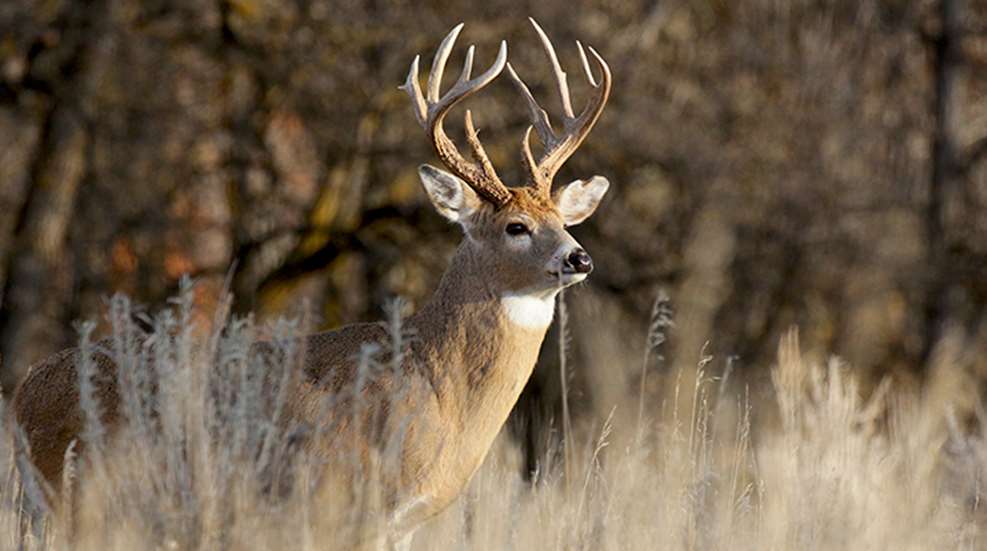
Many deer—really big deer, the multi-tined monarchs that decorate the mansions of our minds—have been shot by hunters confined to as few as 10 acres. Just 10 tiny acres of cloistered sanctuary, and from it they pull bucks that grace Boone & Crockett.
That’s a wonderful accomplishment for those who’ve pulled it off, but I’m glad I’m not one of them because I’d hate to have my hunting so tightly circumscribed. The far horizon is for me. The dark and distant hollow, the mysterious swamp and forest, the big sky prairie where lurks the manifestation of one’s most generous imagination. Bucks unknown, unseen, unsuspected but hoped for. And that’s why, come November, I prowl not 10, not 100, not 1,000, but millions of acres. I’m a public-land deer hunter.
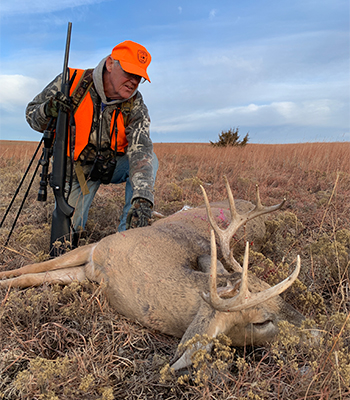
Well whoopee dee and good for me, you might be thinking. Welcome to the party. Deer hunters, especially mule deer hunters, have been pursuing bucks on public acres for decades. Truth is, hundreds of thousands of us—if millions of us—are public-land deer hunters. Out of necessity if not choice. There’s nothing special about public-land hunting other than it’s free. And in many places crowded. And often unproductive. And that’s why my brand of public-land deer hunting is so special. I usually hunt in solitude. I usually get my deer.
Many hunters, perhaps most, do not. You may not know firsthand, but surely you’ve heard on good authority that public-land deer hunting is an exercise in frustration with a dangerous chance for mayhem. Gunshots erupt in a staccato backbeat to crushing leaves and stomping boots as projectiles whine overhead and limbs shatter to the ground. Blundering fools contaminate carefully selected ambush points. Pilfered tree stands and heated arguments occur over who’s on first and who drew first blood.
Not in my experience. Last fall, for instance, a buddy and I consulted a map, chose a swath of free-public-access hunting land, perused it from bordering public roads, glassed it, watched it, spotted some whitetails gamboling across it, entered, hiked, glassed, sat, watched, hiked some more, laid plans and came out heavy. Two bucks, each a 10-point. Not record book contenders, but mature deer fully formed, maximum venison on their frames and enough living and evading on their resumes to command our respect.
They weren’t the first. Not by a long shot, although this last one was a long shot. My H-S Precision .300 WSM had to throw a 150-grain Ballistic Silvertip some 350 yards to reach it. Tom’s buck popped up, clueless and calm, just 80 yards out, much like the many others old Tom and I have dragged from public lands over the years starting way back in 1970.
How do we do it? Research, scouting, reasoning, caution, work, persistence. All the typical exercises that go into a successful hunt. And all of it augmented by decades of accumulated experience. Which you, gentle reader, may not yet have. Not to worry. We didn’t have it either when we started. Gaining it is half the fun.
If you’ll permit me some arrogance, I’ll spill the beans on what I’ve learned in the course of hunting public lands for whitetails and mule deer. I’m sure other hunters have better tactics and enjoy more success than I, but they were not assigned to write this, so you’re stuck with me. Following are some of the tricks of our trade.
This land is your land, this land is deer land. Seek it out. Explore it. Utilize it. Enjoy it. And rejoice for the opportunity to haul your next supply of venison from it. Public-land deer hunting is our heritage.
1. Hunt Low-Pressure Public Lands
This may be your biggest challenge if you live in over-settled regions with too many roads, houses, people and private lands. But there’s no law saying you can’t travel to better odds. Space and solitude increase west of the Mississippi. The Plains states from North Dakota to Texas and west to the Rockies are especially empty, relatively. Our three-day public land hunt last year was interrupted by only four other hunters, two of them hiking in while we were dragging out our last buck.
Finding such places is the research and scouting part of this program. Most research can be done via computer and phone. Study state fish-and-game department websites. They usually provide statistics, often county by county or game unit by unit, of such things as license/tag sales, hunters per season, success rates, sometimes even number of days each hunter was afield. Study these statistics to find low-pressure areas that still have reasonable chances for finding your deer.
A major part of this research will, of course, be identifying public lands open to hunters. These are not limited to federal and state forests. Depending on the state, you may find national wildlife refuges, state game management areas, U.S. Army Corps of Engineers lands, Bureau of Land Management lands, state parks, county parks, waterfowl management areas, timber company lands and a variety of state-leased private lands in programs such as Walk-In Hunting Areas, PLOTs, CREP, etc. open to free public-hunting access. Regardless what each state calls them, these state-leased private areas are privately owned lands leased to the state and open to hunting. Some are restricted somewhat by open-season dates, the species that can be hunted and the tools that can be used to hunt, but nationwide they add up to millions of acres of potential hunting grounds. Some may be as small as 10 acres, but others might cover many square miles.
Most if not all states provide print or online maps of these open lands, but so do phone apps like HuntStand, BaseMap and onX Hunt. Study them in relation to other information you compile about hunter pressure, harvest, etc., then add a generous helping of creative thinking gleaned from the rest of this article.
2. Habitat, Habitat, Habitat
Realtors might insist property value lies in location, location, location, but deer hunters should pay more attention to habitat. A 100-acre public-hunting lake isn’t going to hold many deer. But the 20-yard fringe of cattails or willows around it might. So might a big, sterile-looking pasture with an inconspicuous draw that bends out of sight before broadening into a brushy pocket perfect for hiding bucks.
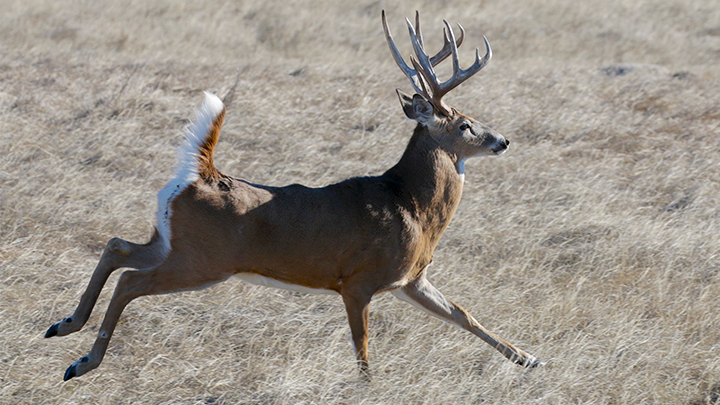
Such a draw led us to Tom’s buck last fall. We detected the honey hole on my HuntStand app using the satellite mapping feature combined with the topo map overlay. The topo lines traced the draw. The satellite image showed dark brush in a pasture primarily covered in grass. This explained why we’d seen deer filing over a ridge between that draw and our glassing spot nearly a mile away. So now I’d better tell you about our glassing techniques …
3. What You See Is What You Might Get
Many more hunters are letting their eyeballs do the walking these days than they did back in 1970. Superior optical instruments get some of the credit, but so do innovators willing to spend hours behind 8X, 10X and even 60X magnification looking for distant deer grandpa would never have dreamed of. Over the years, my public-land hunting buddies and I have used binoculars and spotting scopes to find both mule deer and whitetails with sizable antlers from as many as 4 miles out.
We do this by finding a high spot then scanning, especially early and late in the day when deer are most likely moving. Sometimes we’ll see them emerge from heavy brush or forest to cross a meadow or pasture. Sometimes we’ll find them popping up from beds right in a field of alfalfa, wheat or cut corn. Sometimes they may be barely visible in brushy draws, antlers shining. Sometimes they are glaringly obvious silhouettes against the sky.
Now here’s the trick: Once you see these deer, pay attention to where they’ve come from, what they’re doing and where they’re going. At dusk they’re usually headed for dinner. In the morning they’re probably headed back to their hiding places. Feeding sites could be just the native brush and grass where they’ve been bedded, but if there’s a farm field nearby, figure they’re hitting the crops. Corn, beans, oats, wheat, sunflowers, milo, alfalfa. Heck, I’ve even seen them foraging in vineyards. In the dry West they usually hit irrigated fields or fresh winter wheat. Winter wheat is planted in the fall and sprouts after the first rains. Fresh salad. Whitetails and mule deer will slam it when the sprouts are an inch tall.
4. Pinpoint Concentration Points
Obviously a forage cornucopia like this concentrates deer. I’ve counted as many as 118 on an 80-acre field. So even if you haven’t seen deer walking toward such a field, check all crop fields for tracks and droppings. Mark them. Visit them dawn and dusk, looking for deer. Sometimes you’ll discover a perfectly lush, green alfalfa field holding no deer while a nearby winter wheat field is crowded with dozens. Last fall I glassed a 120-acre alfalfa paradise dotted with 98 mule deer. This explained why I’d found none in the surrounding 4 square miles of pastures, woods and grasslands. Half of them even bedded in the alfalfa. All day. And I assume all night. And when the deer season opened they were still there. The rancher didn’t allow hunting. “No Hunting” properties are an increasing problem, but there are ways for dealing with that.
5. Work the Edges
The relatively recent phenomenon of “No Hunting” in the wild, wild West has been brought about by—you guessed it—increasing hunting pressure, often by “strangers,” some of whom don’t give a hoot. Gates left open, litter, irresponsible shooting. Honestly, this was going on in 1970, too, so I think the “No Hunting” signs are more the result of hobby ranchers taking over former working family ranches. A successful businessman or actor living out his ranch fantasy is less likely to share with country bumpkin neighbors the way old school real ranchers formerly did.
Once you spy deer, pay attention to where they've come from and where they're going.
So you need to work around those boundaries. A big ranch might encompass deer all season, but often those animals slip out for one reason or another, especially during the rut when bucks wander more than usual. Take advantage of this by seeking likely travel routes near fence/property boundary crossings. Often these are the lines of least resistance leading from one ranch or field across a ridge through a saddle to another valley or high-mountain basin on public land. These crossings often produce when the hobby rancher or his friends hunt and spook resident deer. Just a nudge can bump a wary old buck right into your lap.
6. Think Big and Far
Hunters used to Eastern whitetails on small parcels underestimate how far deer can and will move. An old buck might indeed stick to a relatively circumscribed area no wider than 2 or 3 miles, but in the Plains states and Rocky Mountains they’ll move as many as 10 linear miles in a night. Daily migrations from bedding cover to fields can easily cover 3 or 4 miles. Think big and go far. Even Eastern woodland deer can hike surprising distances, especially during the rut. If your usual deer haunts are looking empty, don’t just sit there. Go look for them. Study topo and satellite maps for secluded, thick or hard-to-reach coverts.
7. Prepare for the Weird
It’s the weirdest thing. An old buck, the kind supposedly craftier, warier and tougher to hunt than any other, often does stupid things like stand in an open field in broad daylight. Don’t be shocked. Shoot him. The busted-rack 10-point I dropped last fall had hiked from a private grain field a mile and a quarter onto the public walk-in land on which I stood watching. He had disappeared into a gnarly, wooded draw more than a half-mile from me and was home free. But apparently he felt so safe that an hour later I caught him lollygagging across an open pasture 400 yards on the other side of me.
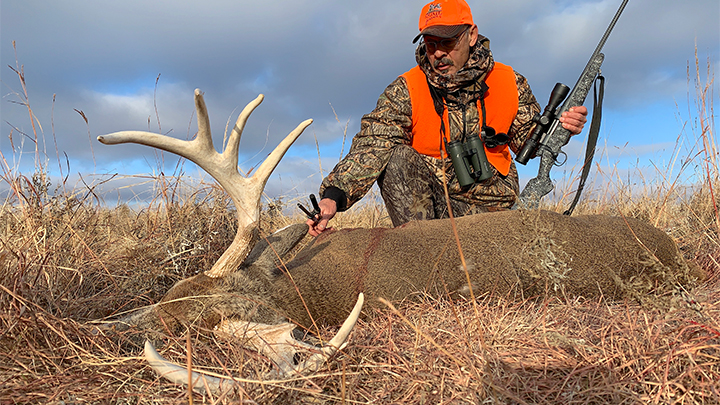
So engrossed was he in his thoughts that I was able to run 100 yards in the wide open to close the gap. The wind was up, so I didn’t want to shoot too far, but I’m no marathoner, so I sat, put the rifle in the sticks, took a fresh range reading to find that he’d already added 50 yards to his advantage, held accordingly and put the bullet through his chest. Whew! Always more exciting than sitting in a tree or box all day, just waiting.
8. … But Hunt Small, Too
For every buck I catch in the open like this, there must be two that explode from coverts so small you’d doubt they’d hold a pheasant. Don’t overlook tiny thickets. Bucks—mule deer as well as whitetails—know how to assume a low profile and stick tight. This is particularly true in heavily hunted places where undisturbed coverts are scarce. When a buck discovers an isolated patch of hiding cover that no one disturbs, he doesn’t care if it’s beside a center pivot irrigation pipe in the middle of a barren field. He doesn’t care if it’s behind an abandoned barn fringed with a thin line of brown weeds. He doesn’t care if the closest respectable forest or brush thicket is a half-mile away. Hiding bucks only care that no one disturbs them during their all-day nap. So you should. Disturb them. Glass those odd patches of cover. Stomp in and flush them out if you have to. One of my hunting buddies and I watched a 150-class whitetail race across a mile of short-grass pasture, hit a patch of 2-foot-tall snowberry and disappear. He’d have reached miles of riverine woods in another quarter-mile, yet he flattened in that silly, half-acre patch of brush. Mike walked into it, flushed the buck at 20 feet and dumped him inside of 20 yards.
9. Small Means Small Public Lands, Too
Despite what I said about 10-acre hunting properties at the start of this article, I recommend you hunt small public areas. We tend to imagine that deer will not hole up in small public habitats, but of course they will, encouraged by the fact that so few of us seek them there. It’s human nature to suspect that any small patch of cover has either been exploited already or is too limited to hold deer. Wrong. Friends and I hunt pheasants on Dakota public areas every year and we flush bucks from them every year. Some cattail sloughs cover no more than 5 acres, yet hold bucks like roosters. In fact, more than once we’ve flushed roosters, shot them and stood pop-eyed as a big buck thrashed from the same cover. I swear I’ve dropped a rooster right on top of a buck once or twice. One of these days I’m going to see my long-tailed bird carried off in the tines of a big whitetail, and won’t that be something to tell the grandkids?
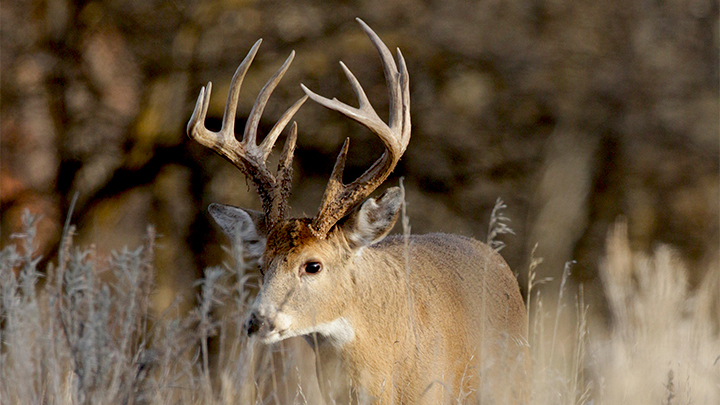
I wouldn’t recommend glassing such dense, small coverts to find deer. The cover is usually too tall and thick to see even tall antlers of standing bucks. And they’re usually lying down. No, the most reasonable approach is an all-out assault. You have to drive them out like rabbits. Of course, this means someone should be on the outside in a position from which he or she can get a reasonable shot. The inside flusher might do well to carry a shotgun and buckshot, although a good, quick rifleman can usually get a bullet in before cover swallows the quarry. Most of the deer we jump from bulrush and cattail sloughs leap when we’re within 30 yards or so, often 10!
10. Try Big and Wild
The opposite of these tiny whitetail hotspots are our big public-land mule deer zones in the Rocky Mountain West. The U.S. Forest Service and Bureau of Land Management oversee millions of acres, much of them in blocks miles wide and more miles long. You could get lost in these for weeks. And so can deer. Even whitetails.
While sage-lands and conifer forests shout mule deer to most of us, they often hide whitetails, too. I’ve rattled-in and shot mature whitetail bucks 30 miles from the nearest town and 7,000 feet above the sea in north Idaho. I’ve watched white tails flagging from willow runs in a sea of sagebrush. I’ve seen whitetails foraging beside elk while moose nibbled willow shoots nearby and mule deer tiptoed around them. The point is this: Our public lands in the West can hold nearly any of our deer species. The trick is finding them.
Mountain whitetails, like mule deer, are migratory. Deep snows force this issue. They can’t stay high in a traditional core area all year, so at some point in October or November they pour off the mountain and into river valleys and lowland farmlands, sometimes onto pastures and sagebrush flats. Find a brushy stream looping through sage with a forested mountain nearby and you could find all kinds of deer.


































